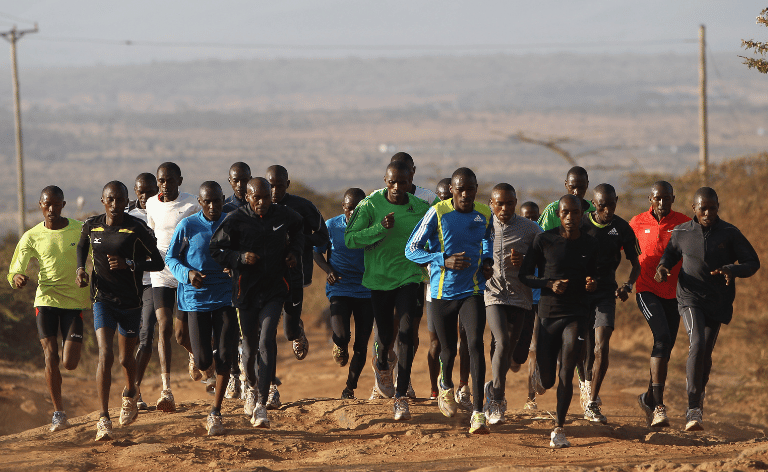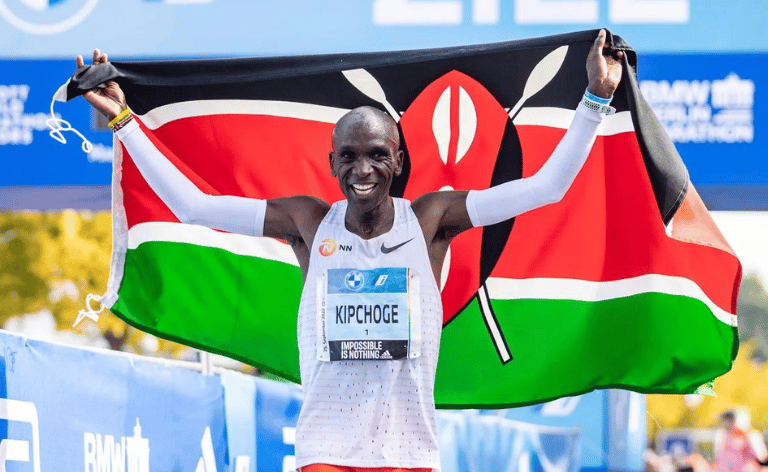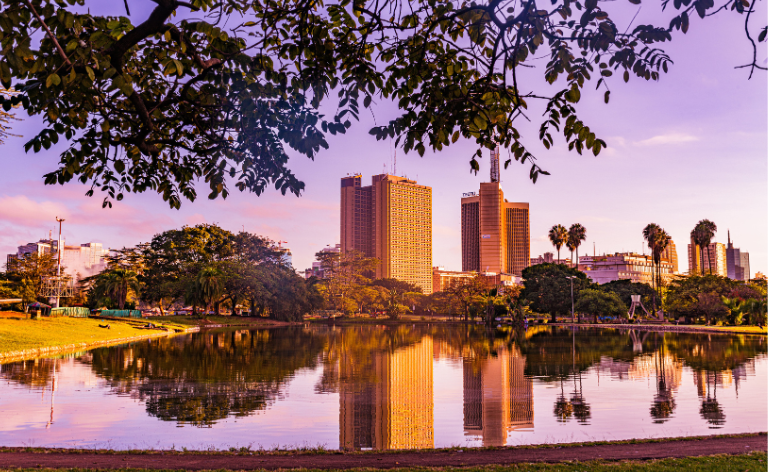The Running Tribe: Why the Kalenjin People of Kenya Dominate Long-Distance Running

The Kalenjin tribe is a group of people that live in Kenya, East Africa. Their outstanding athleticism and long-distance running prowess are noteworthy. The Kalenjin tribe, which numbers around 5 million people and accounts for about 5% of Kenya’s population, has produced more than 73% of the country’s finest long-distance runners. Scientists and sports lovers alike dubbed the Kalenjin tribe the “running tribe” due to their superiority in long-distance running, making them a popular research topic.
The sub-tribes of the Kalenjin tribe include Nandi, Keiyo, Marakwet, and Tugen. These sub-tribes have lived in the western Kenyan highlands for hundreds of years, and their culture has traditionally emphasised physical exercise and endurance. The Kalenjin were historically famed for their abilities in hunting and battle, both of which required physical strength and stamina.
The Kalenjin tribe did not begin to dominate long-distance running until the 1960s and 1970s. Kipchoge Keino was the first Kalenjin athlete to create a name for himself internationally, winning two gold medals at the 1968 Olympics in Mexico City. Since then, the Kalenjin tribe has produced many world-class runners, including Wilson Kipketer and Daniel Komen. Many consider Eliud Kipchoge, the best marathon runner of all time.
What makes the Kalenjin Tribe such excellent runners?
So, what makes the Kalenjin people such great runners? Scientists have been researching this subject for decades, and a few characteristics appear to contribute to their athletic ability.
Genetics
The Kalenjin people’s higher proportion of slow-twitch muscle fibres is one hereditary aspect that may contribute to their running skill. These muscle fibres are more suited for endurance sports since they can perform for extended periods without fatigue. On the other hand, fast-twitch muscle fibres are better suited for short bursts of intense activity, such as running or weightlifting.

Furthermore, scientists believe that the Kalenjin people have a higher-than-average lung capacity. The ability to properly take in and use oxygen is critical for endurance athletes, and greater lung capacity can assist runners in transporting more oxygen to their muscles during training. Lung capacity gives athletes from this tribe an advantage.
Aside from lung capacity, the Kalenjin have higher-than-average quantities of haemoglobin, a protein in red blood cells that transports oxygen throughout the body. Higher haemoglobin means that their bodies are better able to supply oxygen to their muscles during activity, allowing them to retain their endurance for more extended periods.
Also, the Kalenjin people’s physique may contribute to their running prowess. They have unusually slim ankles and calves, a shape shared by Nilotic groups living near the equator. This body type may lower the energy required to move the legs while running, giving it an edge over other body types.
Culture
The Kalenjin’s sprinting dominance cannot be solely attributed to genetics. Their culture also plays a significant role. From a young age, Kalenjin children are encouraged to participate in physical sports such as running and jumping. Also, they often run miles to and from school daily and compete in cross-country races and other sports events. This culture of physical activity and endurance helps develop their bodies and minds for long-distance running. Children as young as ten start running marathons and longer distances. They also use running as their primary transportation method in everyday life, even in the heat and frequently barefoot. Running barefoot improves their form and efficiency, as well as strengthens their feet and legs, which cannot be achieved by using expensive running shoes.
The Kalenjins’ mental toughness also influences how they participate in these activities. Kipchoge Keino triumphed over world record holder Jim Ryun in the 1,500 metres upset at the 1968 Olympics in Mexico City to win gold and become the world record holder. The intriguing aspect of this race was that Keino was supposed to refrain from competing. He was diagnosed with a gallbladder infection just a few days before the event. Gallbladder infections are excruciatingly painful, and they hurt the most when you’re running because you breathe so deeply. However, Keino not only won the race, but he also set an Olympic record at the time.
According to an NPR story, the Kalenjin people undergo a rite of passage ritual as young as 15 to prepare them for enduring agony. Pushing through pain is an essential aspect of the Kalenjin culture, and they participate in events such as crawling naked through a tunnel of stinging African nettles and being beaten on the bony region of the ankles. After these ancient rites that involve immense pain, they are forced to run back to the village rather than walk.
Methods of Training
Another major factor in the Kalenjin’s running performance is their training methods. Athletes from Kalenjin generally train at high altitudes ranging from 7,000 to 9,000 feet above sea level. This altitude training boosts endurance and oxygen consumption, which can help athletes perform better in lower-altitude events. High-altitude training can also increase red blood cell formation, which improves the body’s ability to deliver oxygen to the muscles. Furthermore, long-distance running is vital to the Kalenjin athletes’ training programme. They frequently run up to 20 kilometres daily, sometimes twice daily. These long runs allow them to develop their endurance and aerobic capacity.

In addition, many Kalenjin athletes adhere to a stringent diet high in complex carbs and lean protein. They eat a lot of vegetables, fruits, and grains like millet and maise. They also avoid sugary drinks and processed foods. This diet delivers the nutrients required for training and aids in maintaining lean body mass.
Kenya’s Kalenjin tribe has shown to be great runners. Cultural practises, genetic variables and training methods have aided their athletic prowess. Kalenjin youngsters participate in physical exercises such as running and jumping from an early age, and this endurance culture helps to build their bodies and minds for long-distance running. With higher levels of slow-twitch muscle fibres, lung capacity, haemoglobin, and a unique body build, their genetic composition also contributes to their running performance. Furthermore, their high-altitude training methods have efficiently increased endurance and oxygen uptake. Because of these reasons, the Kalenjin people have become a subject of research and appreciation for their unrivalled domination in long-distance running.
My People Your People highlights different tribes across Africa and explains their traditions and customs. You can read more about it here.











